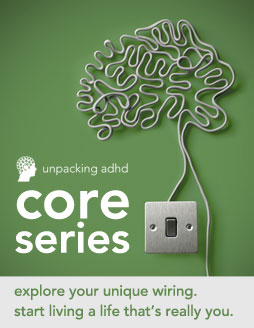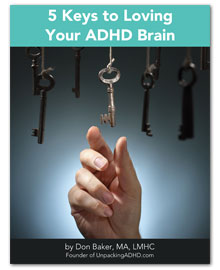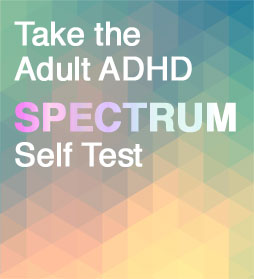Looking to add a new tool to your ever expanding ADHD toolbox? Give “green time” a try. Green time is simply time spent in a “green” area: a city park, a remote rural setting, or totally off the grid in a wilderness area.
It’s important to remember that you need to be in a truly green setting and not just outside in order to get the benefits. The greener and more natural the environment, the bigger the reduction in ADHD symptoms. Multiple studies show there is a remarkably positive link between spending time in nature and relief from ADHD challenges.
Research suggests that nature restores calm to the nervous system, via the restorative effects of effortless attention—while barren, urban environments can increase mental fatigue and irritability. Can you relate to that experience?
Researchers at the University of Illinois found that 20 minutes in nature (green therapy) can reduce symptoms of ADHD like impulse control, concentration, and the various manifestations of hyperactivity. They note that one reason green time works is because when you (and that mass of gray matter you carry with you on your shoulders) are in a relaxed place, your voluntary (goal-directed) attention decreases. Involuntary attention takes over, so your brain can rest and refresh itself. Frances Kuo, PhD, a leading researcher in the studies says, “The greater the exposure to nature, the greater the attentiveness.”
You may be asking “what’s going on”? The theory is that when you struggle to maintain attention—for example, when you concentrate on a task like writing, doing your taxes, or balancing your accounts in Quicken— neurotransmitters in the brain’s prefrontal cortex get depleted. If you struggle too long without a break, you experience a condition that might be called “attention fatigue.” You need to let the system replenish itself, and being in a natural environment seems to let it do that. Voila! Green time.
You may already know about the value of green time and consciously add it to your ADHD management strategies. Or, you may never have considered the benefits. Either way, it really is a value add! For me, and I hope for you, it’s reinforcing to hear how the value of green time is supported by solid research. My hope is that this might even push you to act accordingly.
Green Time Action Steps
Here are some tips for bringing more green time into your life:
1. Plan for at least 20 minutes of green time a day:
- Walking
- Biking
- Skateboarding
- Horseback riding
- Gardening
- Hiking
- Canoeing/ Kayaking
- Fishing
- Running
- Sailing
- Climbing a tree
- Snowshoeing
- Snow skiing / water skiing
- Flying a kite
- Camping
- Outdoor Yoga / Tai Chi
- Bird watching
- Walking the dog
- You name one!
2. Try at least three things on the list at least once.
3. On days when you don’t go outside into the green, notice and compare how you feel. Do you function differently than on days when you do enjoy green time?
4. Please come back and share your experience! Do you notice a difference, and if so, where do you notice the most benefit? I really look forward to hearing from you!

Don Baker, MA, LMHC
I’ve been leading groups for adults living with the traits of ADHD for more than 15 years. I am a licensed counselor in the state of Washington, and I received my own diagnosis of ADHD in 1997. I am passionate about sharing cutting edge information about ADHD wiring and helping people with ADHD connect with others in our “tribe.” I offer TRACTION groups in Seattle, and I created the web-based Unpacking ADHD Core Series, a flexible roadmap for adults with ADHD.





Maybe this is why I’m a Forester!
It’s funny, but I have always noticed things just ‘feel right’ when I get the opportunity to hike. This makes total sense – thank you for your post!
When life got a little challenging I would head bush after a couple of hours of hiking or bike riding it would all become clear. I have done this since I was about 10 and now I am 45 it is still the most reliable method for me
Thanks for taking the time to post, Scott. Funny how we end up advocating for ourselves in amazingly appropriate ways – and may not know the reason why at the time. Bottom line, is doesn’t matter, right?